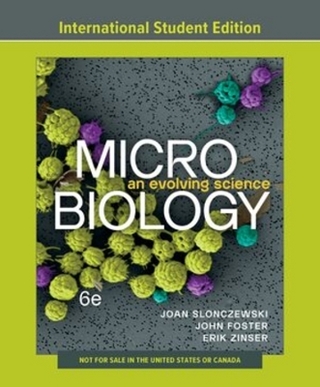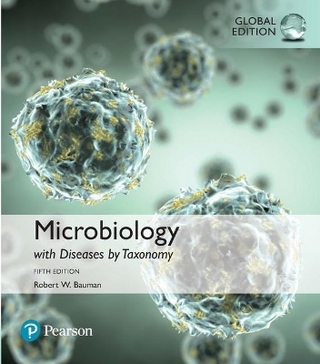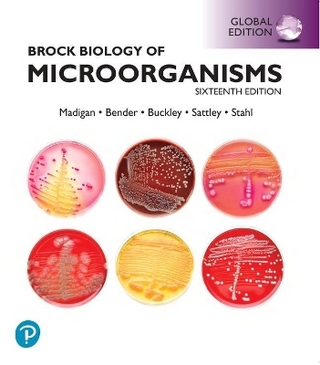
Handbook of the Protists
Springer International Publishing
978-3-319-28147-6 (ISBN)
Dr. John Archibald is Professor of Biochemistry & Molecular Biology at Dalhousie University in Nova Scotia, Canada, and Senior Fellow of the Canadian Institute For Advanced Research. His scientific contributions include serving as Treasurer of the Society for Molecular Biology & Evolution (2009-11) and Associate Editor for various journals, including Genome Biology & Evolution and Journal of Phycology. He is currently an Editorial Board Member for Current Biology, Eukaryotic Cell, BMC Biology, Environmental Microbiology, and Protist Genomics. Dr. Archibald’s research is focused on the diversity of protists and their organelles. He is the author of more than 100 scientific publications, and author of One Plus One Equals One: Symbiosis and the Evolution of Complex Life (Oxford University Press, 2014).Alastair Simpson is a Professor in the Department of Biology at Dalhousie University, Canada, and a Senior Fellow of the Canadian Institute for Advanced Research.^100 scientific publications on the biodiversity, evolutionary history, cell structure and molecular evolution of eukaryotic microbes, with a particular emphasis on free-living protozoa.Dr. Claudio Slamovits is an Assistant Professor in the Department of Biochemistry and Molecular Biology at Dalhousie University in Nova Scotia, Canada. He is also a Fellow of the Canadian Institute For Advanced Research, Program in Integrated Microbial Biodiversity. He is an executive member of the International Society for Evolutionary Protistology and also sits in the Awards committee of the International Society of Protistologists. Dr. Slamovits has received his Ph.D. degree in Buenos Aires, Argentina and conducted postdoctoral training in the University of British Columbia. Since 2009 he leads research in genomics, cell and molecular biology and evolution on a diverse array of protistan lineages.
lt;p>Diplomonadida.- Amoebozoan lobose amoebae (Tubulinea, Flabellinea and others).- Retortamonadida (and Carpediemonas-like organisms).- Opalinata.- Choanoflagellata.- Jakobida.- Kinetoplastea.- Preaxostyla.- Parabasalia.- Heterolobosea.- Archamoebae.- Protosteloid Amoebae (Protosteliida, Protosporangiida, Cavosteliida, Schizoplasmodiida, Fractoviteliida, and sporocarpic members of Vannellida, Centramoebida, and Pellitida).- Euglenida.- Dictyostelia.- Apusomonadida.- Haplosporida.- Blastocladiales.- Chytridiomycota.- Radiolaria (Polycystinea, Phaeodarea).- Apicomplexa.- Paramyxida.- Dinoflagellata.- Ciliophora.- Plasmodiophorida.- Labyrinthulomycetes.- Oomycetes and Hyphochytriales.- Microsporidia.- Centrohelida and other "heliozoans".- Bacillariophyta.- Xanthophyta.- Phaeophyta.- Xenophyophora.- Rhodophyta.- Chlorarachnida.- Cryptophyta (Cryptomonads).- Chlorokybophyceae, Klebsormidiophyceae, Coleochaetophyceae.- Raphidophyceae (Raphidophyta).- Prymnesiophyta.- Eustigmatophyta.- Charophyceae (Charales).- Zygnematophyta.- Glaucocystophyta.- Chrysomonada.- Myxomycetes.
“The Handbook covers many of these dreadful protistan parasites, but, unlike conventional parasitology texts, the parasitic species are discussed within the larger context of their encompassing phyla, allowing the reader to see how the general features of particular types of protists may have given them advantages in exploiting new hosts. … The Handbook is thus an essential resource for researchers studying protistan parasites.” (Wallace F. Marshall, Current Biology Magazine, Vol. 28 (3), February, 2018)
| Erscheint lt. Verlag | 16.8.2017 |
|---|---|
| Zusatzinfo | XXVII, 1657 p. 383 illus., 105 illus. in color. In 2 volumes, not available separately. |
| Verlagsort | Cham |
| Sprache | englisch |
| Maße | 155 x 235 mm |
| Themenwelt | Naturwissenschaften ► Biologie ► Mikrobiologie / Immunologie |
| Schlagworte | Animal Anatomy / Morphology / Histology • Animal physiology • Animal Systematics/Taxonomy/Biogeography • Biomedical and Life Sciences • Eukaryotic Microbiology • microbial ecology • Parasitology • phycology • Protista • Protistology • Taxonomy |
| ISBN-10 | 3-319-28147-X / 331928147X |
| ISBN-13 | 978-3-319-28147-6 / 9783319281476 |
| Zustand | Neuware |
| Haben Sie eine Frage zum Produkt? |
aus dem Bereich


